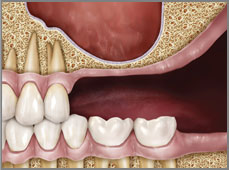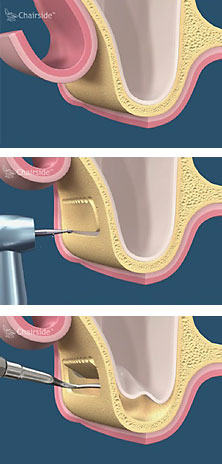The key to success of implants is the bone quantity and quality. The upper jaw, especially its lateral part, has traditionally been one of the most difficult areas for the successful placement of dental implants due to insufficient bone volume, but also because of the proximity of the maxillary sinuses. If the bone resorcinol occurred as a result of periodontal disease and premature tooth loss, it is very likely that you will need the bone supplement so that the implants could be incorporated. There are several techniques that raise the sinus floor and allow new bone to form. The most often applied methods include the following: it starts with the cut high on the mucous membranes; mucous membranes rises and reveals the bone, the lateral wall of the sinus, where a small oval incision is cut; this piece of bone raises in the sinus cavity (similar to the mechanism of the trap for mice), and the spaceunderneath is filled with graft (material taken from your bones or with artificial replacement, for bone – BIOSS). Finally, the incision is sutured, and the healing process can begin.


Six months later, the material placed for augmentation (increase of the volume), is permeated by new bone and the implant can be implemented. Sometimes is possible to process the sinus lift and place the implant during the same action.
Maxillary Sinus Plastic relates to the closure of the sinuses, oroantral communication that may arise as a result of violations of the sinuses during endodontic or periodontal surgery, but most often occurs during tooth extraction. In over 50% of cases occurs after removing the upper first molars because the sinus floor is in close relationship with its roots.
Maxillary Sinus Plastic and The Sinus Lift are routineprocedures, performed under local anesthesia and are completely painless.


